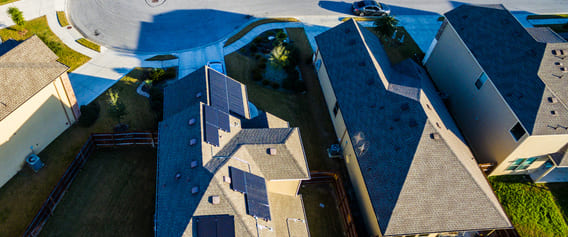Hurry up and take advantage of solar tax breaks – they won’t be there forever

The United States Department of energy has a website called Energy Sage Solar Marketplace that can compare quotes from solar installers in your area, no matter where you live. If you are a homeowner and have ever considered going solar, or are in the process of building a home and have been offered the option, you might consider that in 2015 Congress made the decision to extend the solar panel tax credit (officially the investment tax credit (ITC)) several more years, which means it will not expire until the end of 2021. This credit makes installing solar panels more affordable for all US customers (residential and commercial) by allowing us to deduct 30 percent of the cost of installation of a solar system on our taxes, at least until and through 2019.
After the full 30 percent credit expires in 2022, then what?
Starting in 2020, owners of new solar systems can deduct 26 percent, and in 2021, it drops to 22 percent. From 2022 onwards there is no federal credit for residential solar and commercial clients can only deduct 10 percent of the cost of their systems.
The only provision is that you must own your own system, and not sign a lease or a zero down Power Purchase Agreement (PPA) with a solar installer. Energy Sage suggests that if you are in the market for solar, and you get at least 3 quotes from reputable companies, you could expect to see a $5,000 to $10,000 variable in the estimates.
Pull out your electric bill and decide if this works for you
It’s true that some brands of solar equipment may have higher energy ratings, but interestingly, this doesn’t always translate to higher cost savings. So it is important to do your homework. Know ahead of time approximately how much electricity you currently use. Understand how large your roof is and what the shape is.. Then contact a variety of installers, from local companies to nationally known installers. Find out how long they have been doing this work. Make sure that the company is well established enough to service the warranty, should problems or damages happen.
Feel free to research each of the brands you are considering and discuss your options with your estimator.
Finally, ask the contractors for references you can call in your area. Call those references and ask about the quality of the contractor’s work and the customer’s satisfaction with the panels. What brand of panels did they choose? And finally how the energy savings are working for them.
Incentives can further sweeten your tax break
Check with your local, county, city or statewide electric companies to see if they also have either solar rebate or incentive programs. For instance, in the state of South Carolina, the Distributed Energy Resource Program was enacted in 2014. In addition to net metering in a grid connected system, which allows residents to sell back power to their local utility, South Carolina residents investing in a small-scale residential or commercial solar energy system can take advantage of a 25 percent state tax credit. Adding that to the 30 percent federal solar investment tax credit results in being able to deduct a whopping 55 percent of total installation costs from income taxes.
You’re more likely to get more net-metering opportunities—allowing you to sell power back to the utility—with a grid-connected system than with an off-grid electric system, since most incentives are offered through utilities. There may be additional green tax breaks, that help reduce your annual tax liability.
